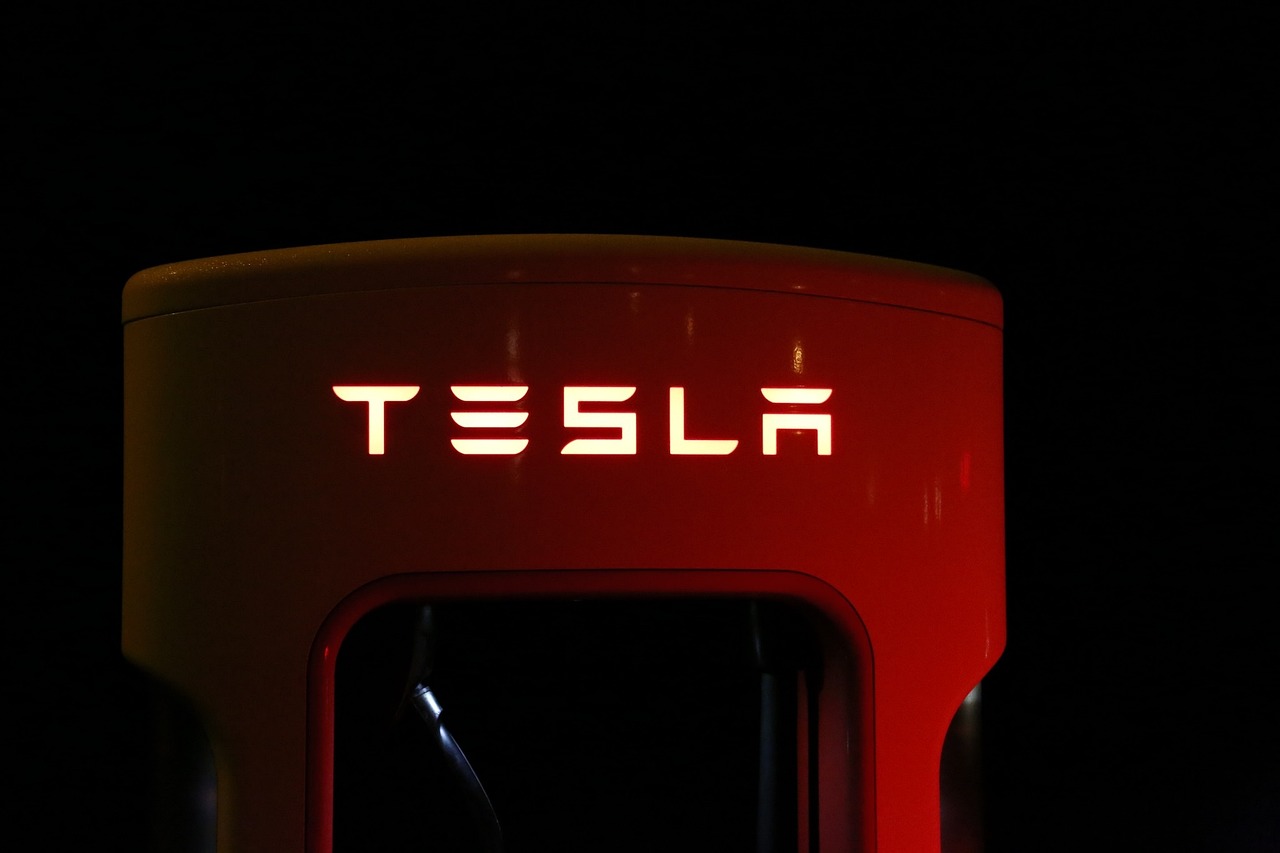Autonomous vehicles harness the power of artificial intelligence (AI) to revolutionize transportation, promising enhanced safety, efficiency, and convenience.
As this disruptive technology continues to evolve, it’s crucial to understand the intricate interplay between AI and self-driving systems, unraveling both their benefits and challenges
AI: The Cornerstone of Autonomous Driving
Autonomous vehicles rely on a symphony of cutting-edge technologies, but it is AI that serves as the conductor, orchestrating the intricate interplay of sensors, algorithms, and decision-making processes.
By harnessing the power of machine learning, deep neural networks, and advanced computational capabilities, AI enables these self-driving marvels to perceive, reason, and navigate the complexities of the road with unprecedented precision.
To fully grasp the pivotal role of AI in autonomous vehicles, it is essential to understand the intricate tasks it undertakes.
From processing vast streams of sensor data to executing meticulously planned trajectories, AI algorithms are the driving force behind the seamless operation of these intelligent machines.
Intelligent Algorithms: The Backbone of Autonomous Navigation
At the core of autonomous vehicles lies a sophisticated network of AI-powered algorithms and neural networks.
These intelligent systems collect and analyze vast amounts of data from an array of sensors, enabling real-time decision-making and adaptive responses to dynamic driving environments.
Object Detection and Identification
Autonomous vehicles rely on advanced computer vision and machine learning techniques to accurately detect and identify objects on the road, including pedestrians, vehicles, cyclists, and potential obstacles.
By continuously processing visual data from cameras and LiDAR sensors, these systems can make split-second decisions to navigate safely and efficiently.
Predictive Analytics and Path Planning
Beyond mere object detection, AI algorithms in autonomous vehicles employ predictive analytics to anticipate potential hazards and plan optimal routes.
By analyzing historical traffic patterns, road conditions, and environmental factors, these systems can proactively adjust speed, change lanes, or reroute to ensure a smooth and safe journey.
Sensor Fusion and Localization
Integrating data from multiple sensors, such as cameras, LiDAR, radar, and GPS, is a critical aspect of autonomous vehicle operation.
AI-powered sensor fusion algorithms combine and interpret this diverse information, enabling precise localization and situational awareness for the vehicle, even in challenging environments.
Enhancing Road Safety and Efficiency
One of the primary motivations behind the development of autonomous vehicles is the promise of improved road safety and reduced human error, which accounts for a significant portion of traffic accidents.
Eliminating Human Factors
Unlike human drivers, AI-controlled vehicles do not experience fatigue, distraction, or impaired judgment, factors that often contribute to accidents.
By removing these human elements, autonomous vehicles can potentially reduce the risk of collisions and improve overall road safety.
Optimized Traffic Flow
AI algorithms can coordinate the movements of autonomous vehicles, enabling smoother traffic flow and reduced congestion.
By communicating with each other and with intelligent transportation systems, self-driving cars can adjust their speeds and routes dynamically, minimizing bottlenecks and maximizing efficiency.
Accessibility and Mobility
Autonomous vehicles offer increased accessibility and mobility options for individuals with disabilities or those unable to operate conventional vehicles.
This technology has the potential to provide greater independence and freedom of movement, enhancing overall quality of life.
Perception and Sensing: AI’s Watchful Eye
Autonomous vehicles are equipped with an array of sensors, including cameras, lidar, radar, and ultrasonic detectors, generating a deluge of data that must be interpreted and acted upon in real-time. This monumental task falls squarely on the shoulders of AI, which employs sophisticated algorithms to analyze and classify objects, pedestrians, road markings, and potential obstacles with remarkable accuracy.
One of the most critical applications of AI in this domain is object detection and identification. Leveraging deep learning techniques and artificial neural networks, AI systems can recognize and classify objects with an efficiency that surpasses human capabilities. This ability is paramount for ensuring the safe navigation of autonomous vehicles, as it enables them to anticipate and respond to potential hazards proactively.
Overcoming Challenges: Addressing Limitations and Concerns
While the potential benefits of AI in autonomous vehicles are significant, several challenges and limitations must be addressed to ensure widespread adoption and public acceptance.
Ethical and Legal Considerations
The introduction of autonomous vehicles raises complex ethical and legal questions regarding liability, privacy, and decision-making in high-risk scenarios.
Developing robust frameworks and guidelines to navigate these issues is crucial for the responsible deployment of this technology.
Cybersecurity and Data Privacy
As AI-powered vehicles become increasingly connected and reliant on data, ensuring cybersecurity and data privacy is paramount. Robust measures must be implemented to protect against potential hacking attempts, unauthorized access, and misuse of sensitive information.
Infrastructure and Mapping Challenges
Autonomous vehicles rely heavily on accurate and up-to-date mapping data, as well as a supportive infrastructure. Addressing the challenges of creating and maintaining detailed maps, particularly in dynamic urban environments, is an ongoing endeavor for the industry.
Public Acceptance and Trust
Despite the potential benefits, many individuals still harbor concerns and skepticism regarding the safety and reliability of autonomous vehicles. Building public trust and confidence in this technology through education, transparency, and rigorous testing is essential for widespread adoption.
Collaborative Efforts: Paving the Way for Innovation
The development and deployment of AI in autonomous vehicles require collaborative efforts from various stakeholders, including automotive manufacturers, technology companies, research institutions, and regulatory bodies.
Public-Private Partnerships
Fostering public-private partnerships is crucial for accelerating research, development, and testing of autonomous vehicle technologies. By combining resources and expertise, these collaborations can drive innovation and address complex challenges more effectively.
Open Data and Knowledge Sharing
Promoting open data and knowledge sharing among industry players, researchers, and policymakers can accelerate the advancement of AI in autonomous vehicles. By fostering a culture of collaboration and transparency, stakeholders can learn from each other’s experiences and collectively push the boundaries of this transformative technology.
Standardization and Regulatory Frameworks
Establishing standardized protocols, regulations, and guidelines is essential for ensuring the safe and consistent deployment of autonomous vehicles across different regions and jurisdictions. Collaboration among governments, industry leaders, and international organizations is vital to creating a harmonized regulatory environment.
The Future of Mobility: Autonomous Vehicles and Beyond
As AI continues to evolve, its applications in the automotive industry extend beyond traditional self-driving vehicles, paving the way for innovative mobility solutions.
Autonomous Ride-Sharing and Public Transportation
AI-powered autonomous vehicles have the potential to revolutionize ride-sharing and public transportation systems. By optimizing fleet management, route planning, and on-demand services, these technologies can improve accessibility, reduce congestion, and promote sustainable mobility in urban areas.
Connected Vehicle Networks
The integration of AI with advanced communication technologies enables the creation of connected vehicle networks, where autonomous vehicles can seamlessly communicate with each other, infrastructure, and other road users. This interconnectivity enhances situational awareness, improves traffic management, and facilitates the development of intelligent transportation systems.
Robotic Delivery and Logistics
AI-driven autonomous vehicles are not limited to passenger transportation. Robotic delivery systems and self-driving trucks can transform the logistics and supply chain industries, enabling more efficient and cost-effective transportation of goods while reducing emissions and improving safety.
Path Planning: AI’s Strategic Mastermind
Beyond mere perception, AI plays a pivotal role in path planning, a crucial aspect of autonomous vehicle operation. By analyzing vast troves of data, including real-time traffic conditions, road geometry, and historical driving patterns, AI algorithms can devise optimal routes that minimize travel time, reduce congestion, and enhance fuel efficiency.
Path planning algorithms employ sophisticated optimization techniques and machine learning models to consider a multitude of factors, such as traffic density, construction zones, and weather conditions, ultimately determining the safest, most convenient, and most economically viable routes from point A to point B.
Path Execution: AI’s Steady Hand
Once the optimal path has been charted, AI takes the helm, guiding the autonomous vehicle through the intricacies of the road. Utilizing advanced control algorithms and decision-making models, AI systems seamlessly navigate the vehicle, adjusting speed, steering, and braking in response to dynamic conditions.
AI’s prowess in path execution extends beyond mere navigation; it also plays a crucial role in monitoring the vehicle’s condition. By employing predictive maintenance techniques, AI can analyze real-time data from various sensors to anticipate potential failures or maintenance requirements, enabling proactive measures to be taken before issues arise.
AI-Enhanced Driver Assistance Systems (ADAS)
While fully autonomous vehicles remain a tantalizing prospect on the horizon, AI-powered Advanced Driver Assistance Systems (ADAS) are already revolutionizing the automotive industry. These systems, which include features like adaptive cruise control, lane-keeping assistance, and automatic emergency braking, leverage AI algorithms to augment human drivers’ capabilities, mitigating the risks associated with human error and fatigue.
ADAS technologies, powered by AI, have the potential to reduce accidents by up to 40%, according to estimates by the National Highway Traffic Safety Administration (NHTSA). By continuously monitoring the vehicle’s surroundings and providing real-time alerts and interventions, ADAS systems act as a co-pilot, enhancing safety and minimizing the risk of collisions.
AI and Automotive Manufacturing: Streamlining Processes
AI’s impact on the automotive industry extends beyond the vehicles themselves, as it plays a pivotal role in optimizing manufacturing processes. Industrial robots, powered by AI algorithms, are revolutionizing assembly lines, enabling precise and efficient production while minimizing human error and enhancing worker safety.
Furthermore, AI-driven predictive maintenance solutions are being integrated into manufacturing facilities, allowing for proactive identification and resolution of potential issues before they escalate into costly downtime or equipment failures.
By analyzing real-time data from sensors and historical maintenance records, AI systems can accurately predict when components or machinery may require servicing, enabling timely interventions and maximizing operational efficiency.
AI and Automotive Insurance: Redefining Risk Assessment
The advent of autonomous vehicles has profound implications for the automotive insurance industry. As liability shifts from human drivers to vehicle manufacturers and technology providers, AI will play a pivotal role in risk assessment and claims processing.
By analyzing data logs from autonomous vehicles, including sensor readings, driving behavior patterns, and incident reports, AI algorithms can provide valuable insights into accident causation and liability attribution.
This information can be leveraged by insurance providers to develop more accurate risk models, enabling them to offer tailored coverage options and potentially reduce premiums for safer autonomous vehicles.
Challenges and Ethical Considerations
While the potential benefits of AI in autonomous vehicles are undeniable, this technology is not without its challenges and ethical considerations.
One of the primary concerns revolves around the transparency and accountability of AI decision-making processes.
As these systems become increasingly complex and opaque, ensuring their decisions are explainable and aligned with ethical principles becomes paramount.
Another significant challenge lies in the realm of cybersecurity. As autonomous vehicles become more reliant on interconnected systems and wireless communication, they may become vulnerable to cyber threats, such as hacking attempts or malicious data manipulation.
Robust security measures and rigorous testing protocols are essential to mitigate these risks and maintain the integrity of AI-powered autonomous vehicle systems.
The Road Ahead: Continuous Advancement and Collaboration
The journey towards fully autonomous vehicles is a long and winding road, paved with technological challenges, regulatory hurdles, and societal acceptance.
However, the relentless pursuit of innovation and collaboration among automakers, technology companies, and research institutions is paving the way for a future where AI-powered autonomous vehicles become an integral part of our transportation landscape.
As AI algorithms continue to evolve, becoming more sophisticated and capable, their integration into autonomous vehicle systems will become increasingly seamless.
Machine learning models will adapt and improve, leveraging vast datasets and real-world experiences to refine their decision-making capabilities continually.
Moreover, the convergence of AI with emerging technologies, such as 5G connectivity, edge computing, and blockchain, holds the promise of unlocking new frontiers in autonomous vehicle development.
These synergistic advancements will enable real-time data sharing, enhanced security, and decentralized decision-making, further elevating the performance and reliability of AI-powered autonomous vehicles.
Conclusion: Embracing the AI-Powered Future of Mobility
The integration of AI in autonomous vehicles is a transformative force that holds immense potential for revolutionizing transportation and mobility.
While challenges and concerns persist, collaborative efforts among stakeholders, ongoing research, and responsible development can pave the way for a future where AI-powered autonomous vehicles become a safe, efficient, and widely accepted reality.
As this technology continues to evolve, it is crucial to prioritize ethical considerations, cybersecurity, and public trust while fostering innovation and embracing the boundless possibilities that AI-driven autonomous vehicles offer.
By navigating these challenges with foresight and a commitment to responsible deployment, we can unlock a future of enhanced mobility, safety, and sustainability for generations to come.



